
NIL
What we do, don’t know about Missouri NIL, house settlement future
Missouri athletic director Laird Veatch struck a relatable tone to begin a nearly half-hour-long press conference with local media to address the changes coming to college athletics. “I really have a disclaimer,” Veatch said from inside Mizzou Arena on Thursday. “And that is that this is, as you know, very much an evolving landscape. So, […]
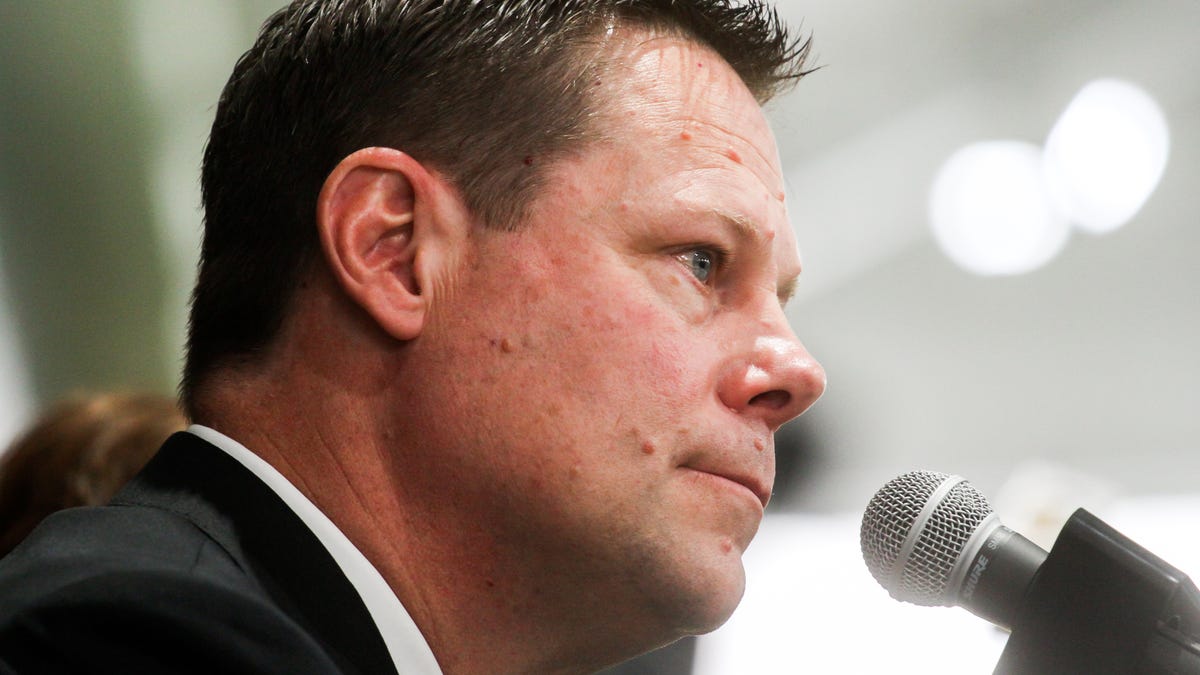
Missouri athletic director Laird Veatch struck a relatable tone to begin a nearly half-hour-long press conference with local media to address the changes coming to college athletics.
“I really have a disclaimer,” Veatch said from inside Mizzou Arena on Thursday. “And that is that this is, as you know, very much an evolving landscape. So, I don’t pretend to be the expert on everything.”
A lot has changed in college athletics this month, and that’s before the biggest waves have even reached the shore.
A new era of student-athlete compensation is set to go into effect July 1 after U.S. District Judge Claudia Wilken granted final approval June 6 to a settlement that will usher in a proposed revenue-sharing model to college athletics.
That means Missouri, like any other institution that opts into the model, will be able to share an estimated $20.5 million directly to student-athletes across this fiscal year. That number will incrementally increase each year.
That’s the foundation of the settlement, but the approval is going to bring a multitude of changes to the way players are paid, the types of deals that will be sanctioned via third-party NIL, and, of course, the way athletic departments handle the upcoming changes.
There is a lot of ground to cover, and not all of it is stable or particularly transparent.
Here’s what we do and don’t know about the way Mizzou will operate in the post-settlement era:
Do know: ‘Bulk’ of Missouri’s revenue will go to football, men’s basketball
As expected, a majority of Missouri’s delegated revenue will go to football and men’s basketball. That’s following a common pattern around the country, as the two sports that generate the most revenue will get the most to pay players.
Veatch said there will be other sports and athletes that earn revenue-sharing money, but Eli Drinkwitz and Dennis Gates’ squads are getting the lion’s share.
“The bulk of our revenue-share funds will go to football and men’s basketball, similar to the conversation you’re seeing across the country,” Veatch said. “In large part in line with how money is generated, but also the brand value that those student-athletes bring to Mizzou.”
Don’t know: How money will be distributed, who else can earn share
What we do not know, however, is exactly how much each sport will earn. Some universities have provided the percentages that will go to football, men’s basketball and other sports.
For instance, Georgia has announced they plan to mirror the house settlement’s back damage formula amounts, which, per Ross Dellenger of Yahoo, would allocate 75% to football (approx. $13.5 million), 15% to men’s basketball (approx. $2.7 million), 5% to women’s basketball (approx. $900,000) and 5% to the remainder of the sports.
Ohio State AD Ross Bjork has announced it will start by paying football, men’s basketball, women’s basketball and women’s volleyball.
But, for now, Mizzou will not be disclosing how or where exactly it allocates its money.
“I don’t feel like we’re in a position to share specific sports or specific details and amounts,” Veatch said. “And the reason for that, candidly, is because until we’re at a point where this process allows for that kind of transparency across the board of all sports, I just candidly don’t see a competitive value or a strategic incentive for us to disclose those specifics.
“I do think that will likely happen in time across the board, but until that time, I just don’t think it’s in the best interest of Mizzou.”
Do know: Scholarships are being added, with money to come out of rev-share pool
Scholarship limits have been eliminated in favor of roster limits across the board are coming as part of the settlement, meaning most sports will have fewer walk-ons. Missouri will spend about $3 million adding 60 new scholarships for the upcoming season. Seemingly, $2.5 million of that will come out of the revenue-sharing pool.
That means, like most schools, Mizzou is probably operating with approximately $18 million to pay players in revenue-sharing money in the 2025-26 fiscal cycle.
Don’t know: How ‘NIL Go’ — third-party NIL clearinghouse — will work
Revenue-sharing comes directly from the school. That’s new and will come directly from the school.
But, third-party NIL — old NIL — still exists. Third-party NIL is the method of paying players that has existed since it originated in 2021. Now, however, any NIL deals from businesses or boosters, or any other source will go through a clearinghouse review and can be approved or denied.
The power conferences have spearheaded the implementation of a ‘College Sports Commission,’ tabbing LBi Software and accounting firm Deloitte to create a clearinghouse system to review any third-party NIL deal that is greater than $600 in value. The clearinghouse will be called ‘NIL Go.’
Qualifying third-party deals will be submitted by the student-athlete to NIL Go, and a commission-created computer algorithm will determine whether those deals are legitimate or not.
Legitimate deals are meant, per the algorithm’s calculations, to be for a “valid business purpose” and be within “a reasonable range of compensation” for that particular student-athlete. Both of those are extremely open to interpretation (and probably, at some point, lawsuits).
But, until litigation happens, that’s besides the point. The clearinghouse’s main goal is to crack down on illegitimate deals.
So, what’s an example of a legitimate and likely-to-be-approved submission versus an illegitimate and unlikely-to-be-approved submission?
Well … nobody really knows. Not even Veatch, an SEC AD.
“We don’t know, again, because we haven’t gone through the process,” Veatch said. “So, I think we’ll have to learn as we go over the coming months, and as those third-party NIL deals are entered by student-athletes and they receive information and feedback, then we’ll learn with them. But until we go through that process, … we can’t speculate really any more than you can.”
Do know: How most Missouri/student-athlete contracts will be paid
Veatch said most of the revenue-sharing contracts that Missouri creates with student-athletes will include monthly payments to the player.
The AD also said that it will be possible to sign multi-year deals with an athlete.
There is no current status quo for this. Likely, universities across the country operate differently when it comes to contracts.
Don’t know: What those contracts will look like
These contracts are not expected to be public record, and universities seemingly will do their best to keep them from entering the public sphere.
That means if you want to know how much Mizzou is spending on its football team through revenue-sharing this upcoming year, you’re out of luck. Mizzou, realistically, like most institutions, will not disclose that information.
“I think we are tracking more and more toward an atmosphere where we have … that type of transparency,” Veatch said. “I don’t think we’re there yet, and in large part because we are still dealing with student-athletes, and they are young people with protections, legal protections, from some of those areas that have to be worked through, and we have to get advice on (it) before we can provide those kind of specifics.
“So, I could see that happening down the road, and maybe that’s in our future, but I think that’s one of the many, many questions that has to be answered on the legal front first.”
That also means it’s unlikely that we know exactly what the ramifications are for breaking the terms of a contract by, say, transferring after one season on a multi-year contract.
Don’t know: If any of this will work
Let’s play the hypothetical game for a moment.
What’s stopping a willing booster from filing a series of $599 payments to circumnavigate the clearinghouse threshold?
What’s stopping a university situated in a state with supremely lenient NIL legislation — Tennessee, for instance — from suing the NCAA or the clearinghouse when its rules and decisions counter what they have written in law at the state level?
What’s stopping a never-ending stream of lawsuits for any number of reasons, including but not limited to eligibility, Title IX or contract disputes?
What is binding any university to, plainly, play ball with the new rules when it may be more advantageous not to?
At present, it appears to mainly be faith, hope and wishes.
Veatch indicated that his recent meetings on the subject have shown him that coaches and administrators want to get on the same page with a uniform set of rules; that a widespread frustration with the current landscape of college athletics may bring the nation’s athletic departments together to embrace this next step.
That does, frankly, seem a little friendly for the often-cutthroat business that is college sports.
Some universities and states have gone to great lengths to circumvent upcoming changes and to create advantages for paying players. Missouri led the charge on that back in 2023, by the way.
Now, a proposed set of uniformity is coming, and the coaches who cried chaos will get the chance to play by the same set of rules.
Will it happen?
“This is only (going) to be as successful as the members decide to make it, right?” Veatch said. “And if we are committed to it and give it a chance, then that’s a starting place. Will there be lawsuits, will there be continued outside pressures? Absolutely, right? And that’s why it is a step, but it’s not the last or final step.
“It’s also why we need congressional support, why we need to have, at some level, some federal action that gives us a level of protection so we can continue to move forward with the collegiate model in a new way, in a new day. And we’ve taken an important step to move that forward, but it is only a step.”
NIL
Inside College Football’s Free-Agency Chaos
As the head of Louisville’s official NIL (name, image, and likeness) collective, Dan Furman has overseen tens of millions of dollars in athlete payments, and he helped redefine how collectives, schools, and players operate in this new era of college athletics. In this episode of Next Up with Adam Breneman, Dan shares how 502Circle started […]
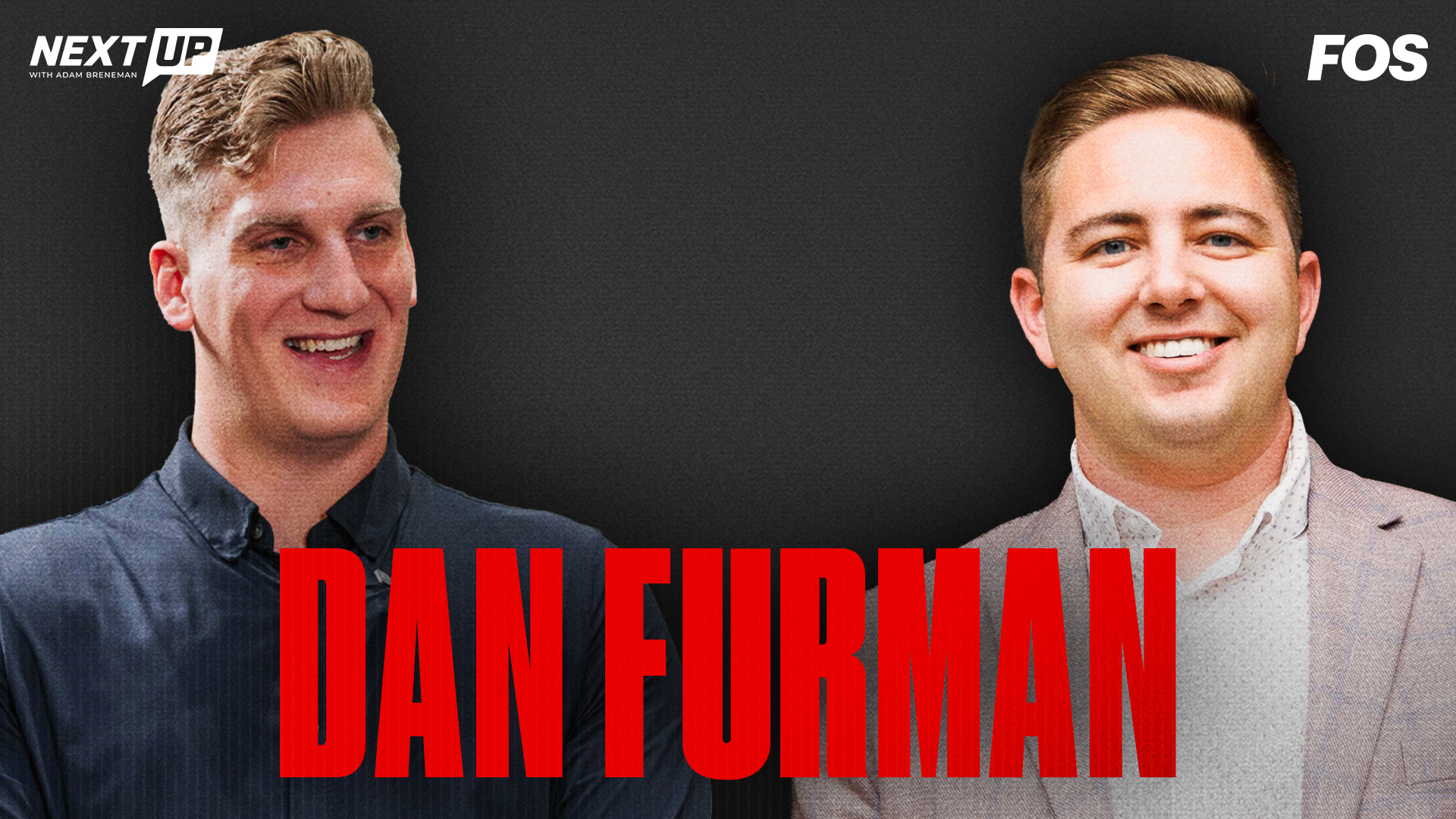
As the head of Louisville’s official NIL (name, image, and likeness) collective, Dan Furman has overseen tens of millions of dollars in athlete payments, and he helped redefine how collectives, schools, and players operate in this new era of college athletics.
In this episode of Next Up with Adam Breneman, Dan shares how 502Circle started with just $12,000 in the bank and scaled into one of the most sophisticated and respected collectives in the country. He opens up about the realities of running seven-figure monthly payrolls, the daily chaos of the transfer portal, and why player negotiations now resemble professional free agency. From in-house battles over donor dollars to dealing with underqualified agents and “runners,” Dan lays out the messy, high-stakes truth behind the NIL headlines.
Adam and Dan also dive deep into the impact of the new revenue-sharing model and how the College Sports Commission is reshaping the rules of engagement, why storytelling and brand-building are now essential tools in recruiting and fundraising, and more.
NIL
House settlement provides level NIL playing field in SEC, Pittman says
Arkansas football coach Sam Pittman says a $2.8 billion antitrust settlement has leveled the playing field in college football. ATLANTA — Sam Pittman says a $2.8 billion antitrust settlement that went into effect this month levels the college football playing field in a good way for his Arkansas team. Pittman said Arkansas now has a chance […]

Arkansas football coach Sam Pittman says a $2.8 billion antitrust settlement has leveled the playing field in college football.
ATLANTA — Sam Pittman says a $2.8 billion antitrust settlement that went into effect this month levels the college football playing field in a good way for his Arkansas team.
Pittman said Arkansas now has a chance to compete on more even terms with other Southeastern Conference powers like Georgia, Alabama and Texas. Pittman said Thursday at SEC media days his program previously dealt with a financial disadvantage against the schools with more established name, image and likeness collectives since NIL payments began in 2022.
According to the terms of the House settlement, each school now can share up to about $20.5 million with their athletes.
“Financially with revenue sharing I think we are finally back on even keel with everybody, which we weren’t,” said Pittman, whose team finished 7-6 in 2024. “If I was going to make an excuse, it would be financially is why we haven’t done quite as well. … But I think now with it being even, look out, the Razorbacks are coming.”
Pittman and most other coaches brought seniors and graduate players to represent their teams at SEC media days, which concluded on Thursday. Pittman brought two 2021 recruits and a transfer, but Arkansas could have difficulty finding seniors next year from his original 2022 signing class because many members of that class have transferred.
Pittman, whose Razorbacks have earned bowl bids in four of his five seasons, said players have different reasons for transferring but many were lured away from Arkansas by more attractive NIL packages at other schools. When asked about the 2022 class, Pittman said, “Here’s what it’s not because of: the way they’re treated, because of the way they’re developed, because of the way they’re taught.”
“That’s not the reason. It could be playing time. It could be finances. Probably the majority of it is finances.”
The House settlement era began on July 1.
The enforcement of the House settlement is still being worked out as the new College Sports Commission has informed athletic directors in letters last week it was rejecting payments to players from collectives created only to pay players instead of as payment for name, likeness and image.
Some seniors at SEC media days said NIL payments and the transfer portal have contributed to their decisions to complete their eligibility instead of leaving school early to pursue opportunities in the NFL.
“I would most definitely say so,” Missouri offensive lineman Connor Tollison said. “Obviously, you know, you have a chance to make some money these days. … With the transfer portal, if you don’t have a necessarily a good opportunity at this place you’re at, you have the chance to go somewhere else and get a fresh start. It wasn’t necessarily something I experienced to my college career, but I’ve seen it. You know, it works for plenty of players. So yeah, I think it’s good for the players.”
When asked if NIL makes it easier for players to complete their eligibility, Kentucky coach Mark Stoops, coming off a 4-8 season, said, “Listen, we all love our players, whether they’re one year in our program, six months, or four years.”
Linebacker Alex Afari, defensive back Jordan Lovett and tight end Josh Kattus were the seniors who accompanied Stoops to Atlanta.
“Of course I love making money from name, image and likeness,” Lovett said. “But I love football first. You know, football was my first love. So I play for the game, not for money.”
Lovett added his primary motivation for returning was to earn his first win over Georgia.
“It’s the big part of college football now because some dudes just make decisions off, you know, the financial stuff,” Lovett said. “I love football. … I still haven’t, you know, beat Georgia yet. You know, Georgia’s one of my goals.”
Copyright 2025 Associated Press. All rights reserved. This material may not be published, broadcast, rewritten, or redistributed.
NIL
What Bronco Mendenhall said about how Utah State football is trending
Any weirdness surrounding Bronco Mendenhall being Utah State football’s head coach should dissipate almost entirely after Thursday. Decked out in Aggie gear at Mountain West media days in Las Vegas, Mendenhall has — by all appearances — fully embraced USU. During an appearance on the Mountain West Network, he quickly — and correctly — cited […]
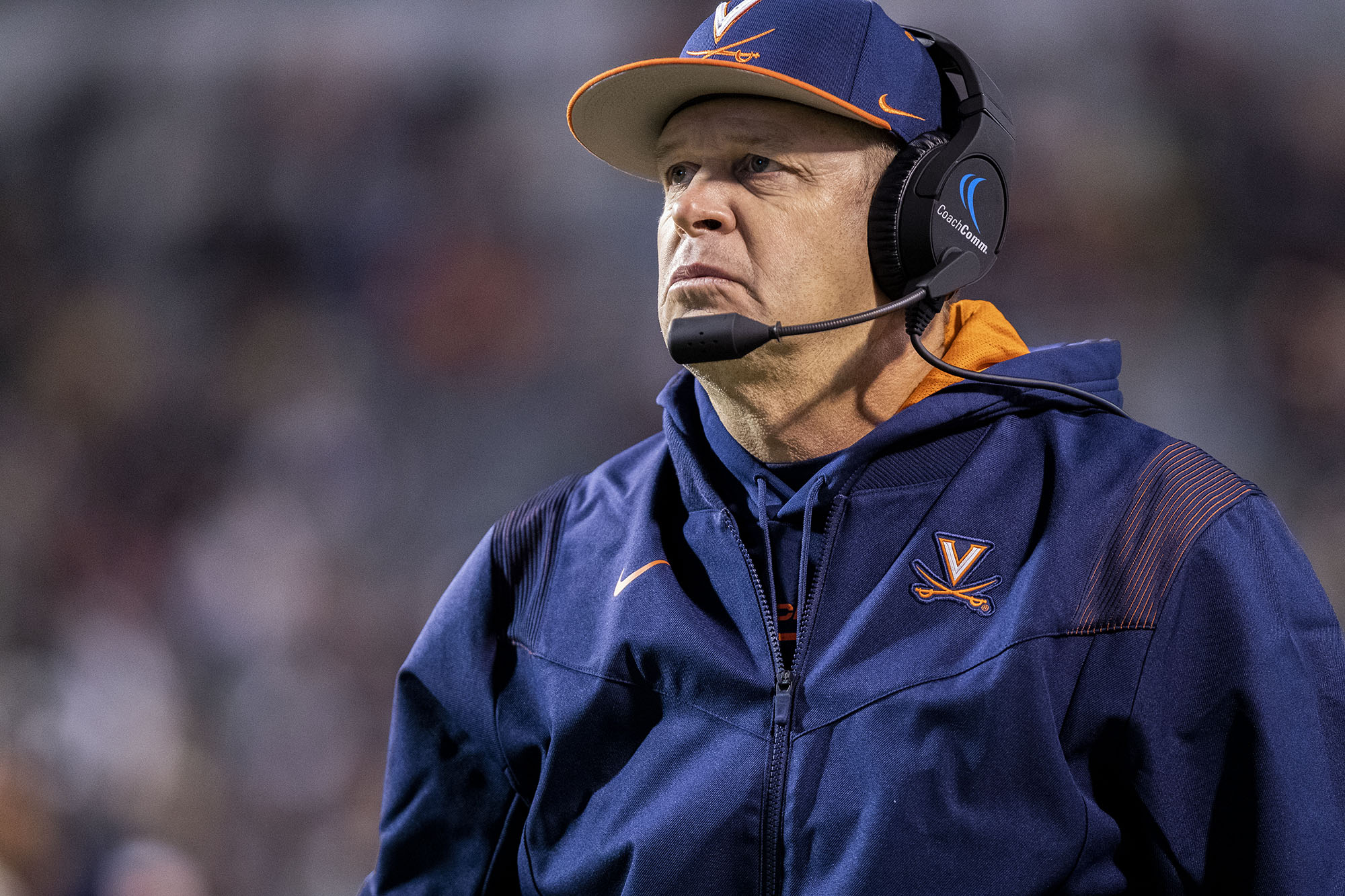
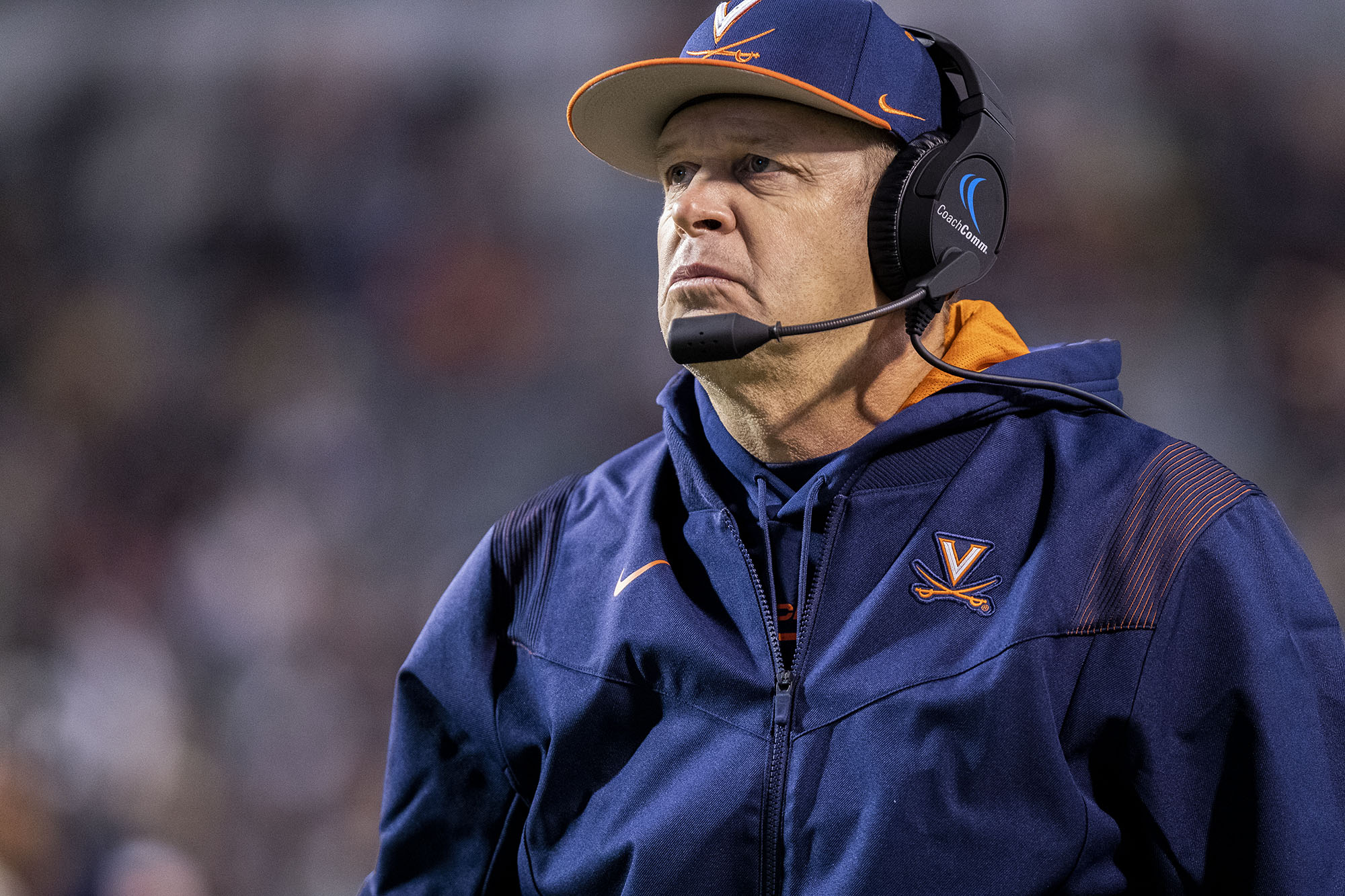
Any weirdness surrounding Bronco Mendenhall being Utah State football’s head coach should dissipate almost entirely after Thursday.
Decked out in Aggie gear at Mountain West media days in Las Vegas, Mendenhall has — by all appearances — fully embraced USU.
During an appearance on the Mountain West Network, he quickly — and correctly — cited Utah State football’s recent history, differentiating his current job from his old one (New Mexico).
He noted the Aggies’ successes over the last decade-plus, getting to bowl games regularly even with considerable turmoil in and around the program and athletic department, and he cited high expectations that exist in Logan after multiple 10-plus win seasons since 2012.
“The winning is different (at Utah State),” Mendenhall said. “The history is different. The expectations are different on a yearly basis.”
He unabashedly praised The HURD, Utah State’s boisterous, maybe even a little belligerent, student section.
“The HURD is unlike anything I’ve ever seen,” he said. “Unbelievable.”
He noted that two of his sons have transferred to Utah State since he took the head coaching job, with Breaker — a former Aggie player — back on the football team even.
Six months after taking the job, it really does look like Mendenhall is Utah State football, and because of that, there still isn’t much known about the Aggies ahead of the 2025 season.
Much like he did in the spring, when he closed practices to the general public, Mendenhall continues to want to keep a shroud over his program, at least for the time being.
In the spring the reasoning had to do with the NCAA transfer portal and tampering. Mendenhall didn’t want to lose players to other programs, players he needed to help quickly rebuild Utah State.
For the most part, the strategy worked. Utah State has brought in 87 players since Mendenhall took over, and the vast majority have remained with the program. Mendenhall did concede that not everyone was thrilled with his decision at the time, though.
“It’s always difficult because I was looking to connect with the community, looking to engage, looking to unite, and here I am closing practice,” Mendenhall said. “But I was transparent about the reason. As long as there is a transfer portal after spring practice, I won’t open spring practice simply because of the roster being protected.
“I’m the steward over (the Utah State) program. I think everyone understood that. … I think it ended up serving its purpose. Not everyone was thrilled about the decision, but ultimately, now, I think everyone can see the benefit of it.”
Now, lack of details coming out of the Aggie program and Mendenhall are about creating a competitive advantage for the upcoming season.
Mendenhall made it clear Thursday he expects USU to be capable of being bowl eligible in 2025, no matter that the team was picked to finish No. 9 in the MWC preseason poll and ESPN’s FPI currently predicts the Aggies will win between four and five games.
Mendenhall noted that he wanted to keep those outside of the program in the dark, particularly when it comes to the offense under offensive coordinator Kevin McGiven.
“I’d like to be unnameable,” Mendenhall said. “So what style do we play? I don’t know, which makes it harder to prepare and I like the creativity that comes with that, and Kevin is a perfect fit that way.”
Mendenhall did say he believes USU’s secondary, headlined by senior Ike Larsen and New Mexico transfers Noah Avinger, Bryson Taylor and Bobby Arnold, will be a strength of the team’s this season.
“It’ll be a strong suit of our organization,” he said.
Mendenhall noted that Larsen, a game-breaking star at times at USU, had a down season in 2024, but is capable of bouncing back in a big way this year.
“He’s anxious to re-link the upcoming year to what he’s truly capable of and what will be needed from him,” Mendenhall said.
Mendenhall also praised quarterback Bryson Barnes, Utah State’s starting quarterback for next season.
“His experience is impeccable, the type of leadership, the type of grit, the type of determination and he’s dual threat,” Mendenhall said.
“As a defensive coach, you run out of numbers pretty fast when someone can run and throw. … And with the head coach that loves tough, competitive people and style of play, he’s a perfect fit for us.”
Mostly, though, Mendenhall talked about the culture he is trying to establish at Utah State, which anyone who has followed Mendenhall during the course of his coaching career is familiar with.
“The foundation is the expectations,” Mendenhall said, “and there’s a lot of research that talks about how the level of expectations determines outcomes. Our program is demanding. It’s challenging. It requires a lot, but by giving a lot, there’s a sacrifice part, but there’s also a connection part that’s deeper and interesting.
“Many (in college football) are afraid to ask that much because their players might leave, but what we have found, and what research shows, is just the opposite. The more you ask, the more sticky they become to your organization, and so our team is becoming more resilient. They’re becoming stronger. They’re more united by doing hard things together and that’s always led to pretty strong outcomes, at least in my career.”
Mendenhall has, by all objective measures, had a highly successful coaching career at the Division I level, first at BYU, then Virginia and New Mexico, so while there are still a lot of unknowns about Utah State football in its Mendenhall era, precedence suggests there is reason for optimism for Utah State football, in 2025 and in subsequent seasons to come.

NIL
Why Alabama Football could have college football’s No. 1 defense
From a position of being more than good last season, the Alabama Football defense can be better in the coming season. Among all FBS teams, the Alabama Crimson Tide defense finished at a credible No. 10 in Scoring Defense last season. Against FBS teams with a winning record, Alabama was No. 3 in allowing 4.62 […]

From a position of being more than good last season, the Alabama Football defense can be better in the coming season. Among all FBS teams, the Alabama Crimson Tide defense finished at a credible No. 10 in Scoring Defense last season. Against FBS teams with a winning record, Alabama was No. 3 in allowing 4.62 yards-per-play. National Champion Ohio State was only slightly better at 4.52 yards.
The problem for Alabama last season was when Kane Wommack’s defense was bad, it was glaringly bad. The Crimson Tide outscored Georgia, but gave up 519 yards to the Bulldogs. After the loss to Vandy, Alabama legends George Teague and Roman Harper questioned Wommack’s scheme. Harper stated that being “brutally honest …(the Tide’s) vision coverage was a failure, lacking eye discipline.”
Though the Tide’s defense improved in the latter half of the season, Oklahoma’s offense out-schemed Kane Wommack’s defense, allowing Jackson Arnold to rush for 131 yards.
A second season playing Wommack’s system should benefit many Alabama defenders. Based on the talents of individual players, a calculation by Pro Football Focus (PFF) projects the Crimson Tide will be college football’s No. 1 defense for 2025. PFF is sometimes questioned for its rating system. In ranking the best defensive teams, it does not consider how schemes will fare against a team’s schedule.
According to PFF, college football’s best defenses will be Alabama, Texas, Clemson, Georgia, Penn State, Notre Dame, Oregon, Ohio State, Texas A&M, and Texas Tech. PFF’s short explanation for rating Alabama Football No. 1 is “Alabama is also the only school in college football that features a top-10 player at every defensive position.”
Using Phil Steele’s ranking of position groups, the Clemson, Notre Dame, Penn State, and Michigan defenses are ahead of the Crimson Tide. Close behind Alabama in Steele’s calculations are Texas and Georgia.
According to a subjective projection by Saturday Down South, the SEC’s top defenses are expected to be in order: Texas, Alabama, Georgia, Tennessee, and Oklahoma. According to Steele, the Sooners have the 20th-best defensive back group, but OU is top four for defensive line and linebackers. Steele’s analysis does not rate Tennessee as being top five in the SEC.
An Alabama Football Defense at No. 1?
Talent and experience favor the Crimson Tide. Add into consideration depth and Alabama has the potential to be at or near No.1 defensively. To the extent scheme was a problem last season, it is reasonable to believe that Wommack, Mo Linguist, Chuck Morrell, Freddie Roach, and Christian Robinson have made adjustments.
When will Alabama football fans know how good the defense will be? The September date in Athens, GA will be telling. It is possible the Tide’s defensive front will prove too much for the Bulldogs’ offensive line.
NIL
National outlet ranks two different Kansas teams among some of the best in recent history
The Athletic’s Brendan Marks (subscription required) took on the daunting task of ranking each great college basketball team since 2000. The Jayhawks made some splashes throughout the list, No. 25 Kansas 2019-20 This was a fan favorite Kansas team of recent memory. When you think of “What if” teams, this one has to be up […]

The Athletic’s Brendan Marks (subscription required) took on the daunting task of ranking each great college basketball team since 2000. The Jayhawks made some splashes throughout the list,
No. 25 Kansas 2019-20
This was a fan favorite Kansas team of recent memory. When you think of “What if” teams, this one has to be up there for Jayhawk fans. This was a squad loaded with imressive stats. To start, a 28-3 record prior to the season’s cancellation due to the Covid-19 pandemic. Combine that with the fact that the Jayhawks marked a 48.4% from the field which ranked 9th-best in the nation, along with the second-best amount of losses in the nation (3).
In that shortened season, Kansas posed the 11th-best defense in the land as the 1882 points that Bill Self’s squad gave up helped drive a stout defense.
Kansas was in the midst of a 16-game winning streak, which has included a 64-61 win over the No. 1 Baylor in what was one of the final games of that season.
Now, maybe when you look at a majority of stats, there aren’t many that will jump out as “fantastic” but one really sticks out.
Stat website Sports Reference measure strength of schedule, by this description.
“The rating is denominated in points above/below average, where zero is average. Non-Division I games are excluded from the ratings.”
Kansas ranked the hardest SOS with an 11.63, was the only team with 25+ wins up until Baylor who ranked 32nd with a 9.13 SOS.
Leading the team was Devin Dotson with 18 points per game Udoka Azubuike followed up with 13.7 points per night.
6. Kansas 2007-08
Self’s fifth year at the helm of the Jayhawks ranks as his most wins as Kansas totaled 37 wins to just three losses.
A 20-game win streak launched the season for this special squad, which was halted by a 4-3 stretch before Self and Co. saw a 13-game win streak go off en route to a Kansas National Championship in that thrilling 75-68 OT win against a Memphis team marshaled by John Calipari and the high-flying Derrick Rose.
In the Final Four, Kansas beat up North Carolina by 18 points in a game that featured five future NBA Tar Heels in Tyler Hansbrough, Wayne Ellington, Danny Green, Ty Lawson, and Alex Stepheson.
Seven different Kansas players went on from that team to join the NBA, the likes of Darrell Arthur, Brandon Rush, Mario Chalmers, Darnell Jackson, Sherron Collins, Sasha Kaun, and Cole Aldrich
Self’s team averaged 80.5 points per game, which ranked 13th in the nation, while also holding firm with a defense 21st-best which allowed just 61.5 points per game.
The leading scorer on that team was Brandon rush, who returned 13.3 points per game, three more Jayhawks kept over 10 points per game during that championship-winning season.
More Kansas Basketball News
NIL
Arkansas coach Sam Pittman says House settlement provides level NIL playing field in competitive SEC
ATLANTA — Sam Pittman says a $2.8 billion antitrust settlement that went into effect this month levels the college football playing field in a good way for his Arkansas team. Pittman said Arkansas now has a chance to compete on more even terms with other Southeastern Conference powers like Georgia, Alabama and Texas. Pittman said […]
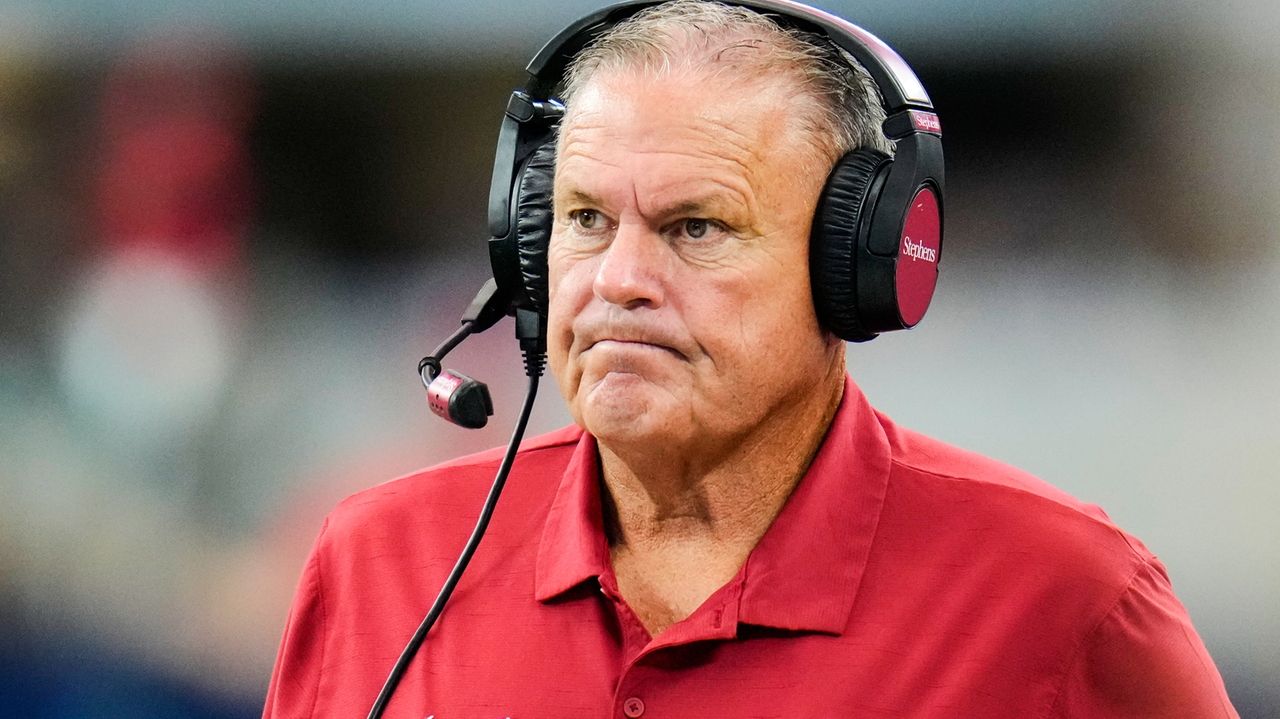
ATLANTA — Sam Pittman says a $2.8 billion antitrust settlement that went into effect this month levels the college football playing field in a good way for his Arkansas team.
Pittman said Arkansas now has a chance to compete on more even terms with other Southeastern Conference powers like Georgia, Alabama and Texas. Pittman said Thursday at SEC media days his program previously dealt with a financial disadvantage against the schools with more established name, image and likeness collectives since NIL payments began in 2022.
According to the terms of the House settlement, each school now can share up to about $20.5 million with their athletes.
“Financially with revenue sharing I think we are finally back on even keel with everybody, which we weren’t,” said Pittman, whose team finished 7-6 in 2024. “If I was going to make an excuse, it would be financially is why we haven’t done quite as well. … But I think now with it being even, look out, the Razorbacks are coming.”
Pittman and most other coaches brought seniors and graduate players to represent their teams at SEC media days, which concluded on Thursday. Pittman brought two 2021 recruits and a transfer, but Arkansas could have difficulty finding seniors next year from his original 2022 signing class because many members of that class have transferred.
Pittman, whose Razorbacks have earned bowl bids in four of his five seasons, said players have different reasons for transferring but many were lured away from Arkansas by more attractive NIL packages at other schools. When asked about the 2022 class, Pittman said, “Here’s what it’s not because of: the way they’re treated, because of the way they’re developed, because of the way they’re taught.”
“That’s not the reason. It could be playing time. It could be finances. Probably the majority of it is finances.”
The House settlement era began on July 1.
The enforcement of the House settlement is still being worked out as the new College Sports Commission has informed athletic directors in letters last week it was rejecting payments to players from collectives created only to pay players instead of as payment for name, likeness and image.
Some seniors at SEC media days said NIL payments and the transfer portal have contributed to their decisions to complete their eligibility instead of leaving school early to pursue opportunities in the NFL.
“I would most definitely say so,” Missouri offensive lineman Connor Tollison said. “Obviously, you know, you have a chance to make some money these days. … With the transfer portal, if you don’t have a necessarily a good opportunity at this place you’re at, you have the chance to go somewhere else and get a fresh start. It wasn’t necessarily something I experienced to my college career, but I’ve seen it. You know, it works for plenty of players. So yeah, I think it’s good for the players.”
When asked if NIL makes it easier for players to complete their eligibility, Kentucky coach Mark Stoops, coming off a 4-8 season, said, “Listen, we all love our players, whether they’re one year in our program, six months, or four years.”
Linebacker Alex Afari, defensive back Jordan Lovett and tight end Josh Kattus were the seniors who accompanied Stoops to Atlanta.
“Of course I love making money from name, image and likeness,” Lovett said. “But I love football first. You know, football was my first love. So I play for the game, not for money.”
Lovett added his primary motivation for returning was to earn his first win over Georgia.
“It’s the big part of college football now because some dudes just make decisions off, you know, the financial stuff,” Lovett said. “I love football. … I still haven’t, you know, beat Georgia yet. You know, Georgia’s one of my goals.”
-

 Motorsports2 weeks ago
Motorsports2 weeks agoWhy Cosmetics are Making Up for Lost Time in Women’s Sports
-

 Motorsports2 weeks ago
Motorsports2 weeks agoTeam Penske names new leadership
-

 Youtube2 weeks ago
Youtube2 weeks ago🚨 BREAKING: NBA MVP Shai Gilgeous-Alexander signs the RICHEST annual salary in league history
-

 Sports1 week ago
Sports1 week agoNew 'Bosch' spin
-

 Sports1 day ago
Sports1 day agoVolleyball Releases 2025 Schedule – Niagara University Athletics
-

 College Sports2 weeks ago
College Sports2 weeks agoMSU Hockey News – The Only Colors
-

 Sports2 weeks ago
Sports2 weeks agoE.l.f Cosmetics Builds Sports Marketing Game Plan Toward Bigger Goals
-

 Fashion3 weeks ago
Fashion3 weeks agoUSA vs. Ireland FREE LIVE STREAM (6/29/25)
-

 College Sports5 days ago
College Sports5 days agoBuford DB Tyriq Green Commits to Georgia
-
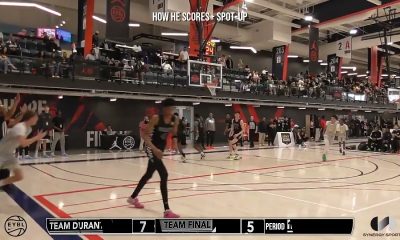
 College Sports3 weeks ago
College Sports3 weeks agoIU basketball recruiting





























